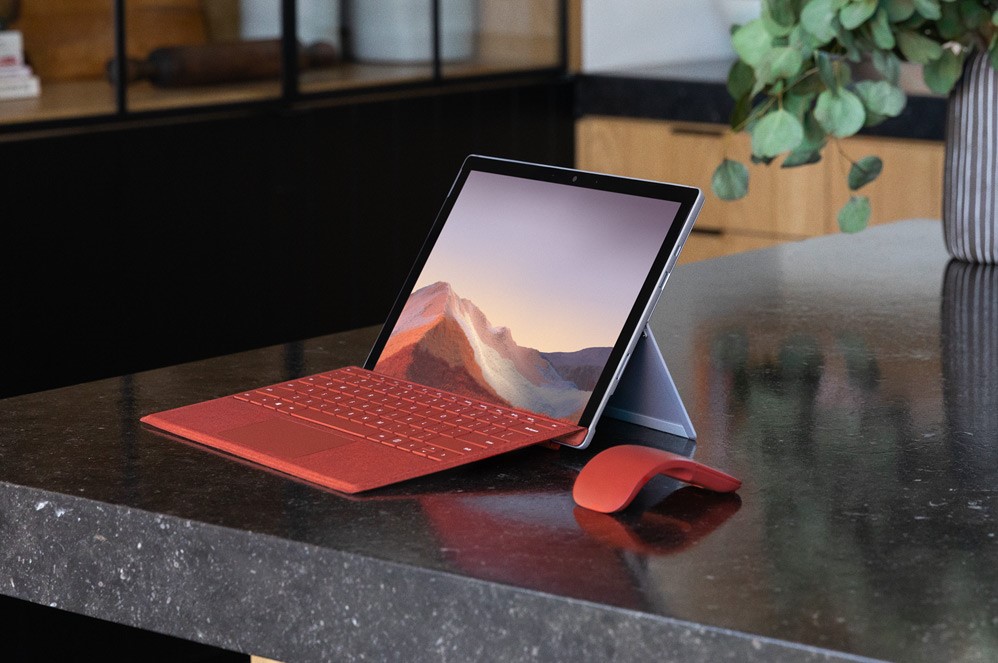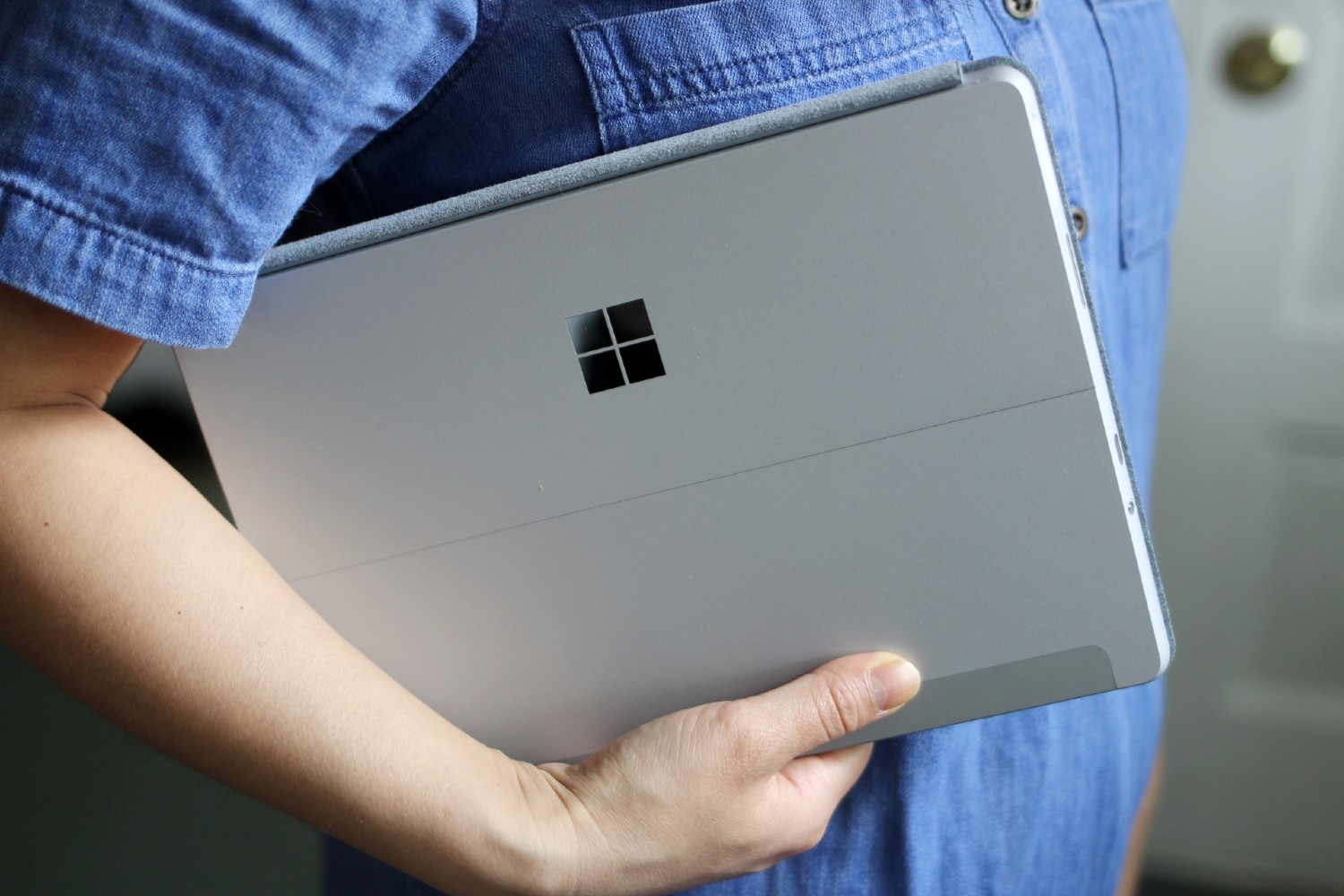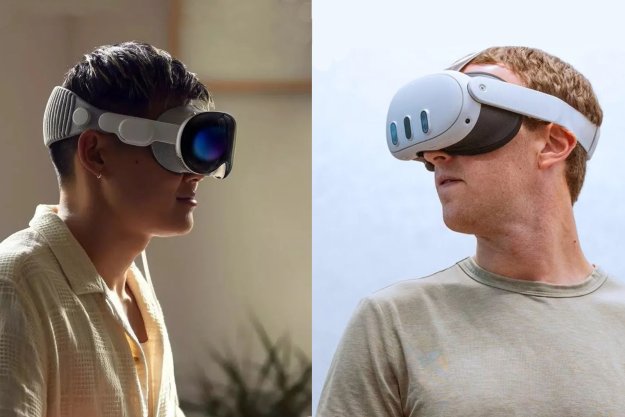Microsoft’s Surface Go 2 and Surface Pro 7 are two of the best 2-in-1s out there, despite their differences in price and performance. Released in October 2019, the Surface Pro 7 includes up to a quad-core Intel Core i7 processor, great for those looking to tackle more intensive applications. The 10.5-inch Surface Go 2, released in May 2020, offers the power of Windows 10 on the go, including features such as an Intel Core M3 CPU and up to 10 hours of battery life.
If you’re not sure which Microsoft Surface device is right for you, let us be your guide as we examine the best and worst aspects of each hybrid tablet.
Design

The Surface Pro 7 and Surface Pro Go 2 have more in common than ever before when it comes down to pure aesthetics. Both tablets feature a magnesium housing with a shiny Windows logo on the rear of the device. The Surface Go 2 features a dark gray strip running along the top back of its lid, which isn’t as ascetically clean and minimal as the Surface Pro 7, but it shouldn’t be a significant distraction. The build quality of both units is solid and what we expect to see from devices sporting the Surface brand name. While the Surface Go 2 is only available in a platinum color exterior, the Surface Pro 7 allows you some customization with a matte black variation available for select configurations.
Part of the Surface Go 2 name is derived from its smaller form, making it easier to take it with you wherever you travel. The smaller case does indeed mean a reduced screen, with the Surface Pro 7 including a 12.3-inch display in contrast to the Surface Go 2 and its 10.5-inch display. Both tablets feature Microsoft’s PixelSense display technology with a resolution rating of at least 220 pixels per inch and supporting Microsoft’s Surface Pen. The Surface Go 2 display comes in at 1,920 x 1,280 pixels with the Surface Pro 7 offering a higher 2,736 x 1,824 pixel resolution.
Both Surface Pro 7 and Surface Go 2 sport a healthy selection of ports, including a USB-C port, 3.5mm headphone jack, microSD card reader, Surface Connect port, and Surface Type Cover port. The Surface Pro 7 adds an older style USB-A port, which many users might find beneficial — especially those still utilizing older thumb drives and other physical devices. Microsoft’s detachable keyboard, Type Cover, continues to be offered as an accessory for both devices, with colors including red, light blue, gray, black, burgundy, and cobalt blue.
Performance

Microsoft’s Surface Pro 7 features up to an Intel Core i7 quad-core processor, Intel Iris Plus Graphics, 16GB of RAM, and a 1TB solid-state drive. While the Surface Pro 7 isn’t a machine that video editors or other individuals requiring extremely intensive software will run, it soars above what little power the Surface Go 2 has to offer. Open the Surface Go 2, and you’ll find the machine maxing out with an Intel dual-core Core m3 processor, Intel UHD Graphics, 8GB of
While the Surface Pro 7 includes Windows 10 Home out of the box, Surface Go 2 users will find Windows S installed on their machine. For more information, check out our detailed guide on Windows S. However, for the CliffsNotes, know that Windows S must be upgraded to Windows 10 Home before you can run applications outside of the Microsoft Store or use a web browser other than Microsoft Edge. The switch to Windows 10 from Windows S is relatively painless but does take a bit of time.
The difference in power between the Surface Pro 7 and Surface Go 2 isn’t obvious with basic tasks, but if running intensive applications or multitasking is a concern, the Surface Pro 7 wins out hands-down.
Portability

Surface Go 2 is designed to be portable — it’s right in the name. The smaller Surface Go 2 tablet comes in at 9.65 x 6.9 x 0.33 inches and weighs either 1.2 pounds (544 g) or 1.22 pounds (533 g), depending on the configuration (Wi-Fi versus LTE) you select. The larger Surface Pro 7 comes in at 11.5 x 7.9 x 0.33 inches and weighs either 1.7 pounds (775 g) or 1.75 pounds (790 g), also dependent upon the configuration (Core i3/i5 versus Core i7). While Surface Pro 7 isn’t heavy by any means, the Surface Go 2 has a clear half-pound advantage. Be sure to note that a Surface Pro Type Cover will add 0.86 pounds (210 g), while a Surface GO 2 Type Cover will add 0.54 pounds (245 g).
Surface Pro 7 and Surface Go 2 offer similar battery life, with the Surface Pro 7 winning by an additional 30 minutes — that’s 10 hours and 10.5 hours, respectively. For a device that is built around portability, we would have liked to see higher numbers from the Surface Go 2. What does give Surface Go 2 an extra edge when it comes to productivity on the go is the built-in LTE Advanced Qualcomm Snapdragon X16 LTE Modem. With the Surface Go 2, users can connect with Wi-Fi or use a compatible 4G LTE network to stay online.
The perfect choice for you

Both the Microsoft Surface Pro 7 and Surface Go 2 are excellent tablets, each designed for different tasks. While the Surface Pro 7 is aimed at those seeking a powerful tablet for intensive tasks, including photo editing, programming, and multitasking, Surface Go 2 is well-positioned for anyone wanting a small, always-connected Windows 10 tablet on the move.
With Surface Go 2 starting at $399 and Windows Pro 7 starting at $749, the former is more affordable. Select the machine that best meets your needs, but be sure not to purchase the Surface Go 2 and expect too much horsepower.
Editors' Recommendations
- Surface Pro 10: all the major changes rumored for the new model
- The most common GoTo Meeting problems and how to solve them
- MacBook Pro 16 vs. MacBook Pro 14: The important differences
- Vision Pro 2: everything we expect from the future of Apple’s headsets
- Best Surface Laptop and Surface Pro deals: From $450


